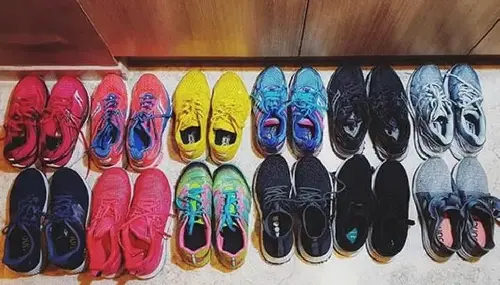
Choosing the right running shoes is crucial for comfort, better performance, and to lower the chance of getting hurt while running. Given the vast array of models, brands, and technologies, both novice and seasoned runners often find it challenging to select the best option.
Whether you run to stay fit or are training for a marathon, the right running shoes provide optimal support, minimize injury risk, and enhance the running experience. The ideal shoes will fit comfortably from the first wear and support your natural running gait.
Based on information from Runners Need, Rei, and Asics, here are the different types of running shoes and tips for selecting the right pair:
Types of Running Shoes
1. Road Running Shoes
If you mostly run on paved surfaces like asphalt or city sidewalks, this type of running shoe is the most suitable choice. Designed for flat, hard surfaces, they offer soft cushioning and good shock absorption, reducing joint pressure and the risk of injury.
However, their lack of grip and traction makes them unsuitable for off-road trails, and they can be easily damaged on rocky or rugged terrain.
2. Trail Running Shoes
If you often run on dirt paths, fields, or muddy ground, trail running shoes are a better option. Unlike running on flat asphalt, natural paths often have obstacles like tree roots, rocks, loose stones, puddles, and mud.
Therefore, trail shoes typically feature a rugged outsole, stronger grip, high traction, and additional ankle support for unstable terrain. Conversely, their aggressive soles and lugs can cause uncomfortable pressure and wear out quickly on hard asphalt roads.
3. Lightweight and Racing Running Shoes
Designed for speed and efficiency, lightweight and racing running shoes are lighter and more flexible. These shoes usually have enough cushioning with a simple design, offering protection while feeling light on your feet.
These characteristics help reduce muscle fatigue and discomfort over long distances, making them ideal for intense training or racing.
Tips for Choosing Running Shoes
1. Avoid Choosing Shoes Solely Based on Appearance
An important first step in choosing running shoes is to disregard appearance. Even if you like the design or colors, that should not be the main reason you choose them. Good-looking shoes will not help you if they do not fit the shape and size of your feet. Comfort and fit are much more important than just style.
2. Consider the Running Location
Decide where you will run most often; on asphalt roads, dirt trails, or gravel paths, because the type of surface will help you choose between road running, trail running, or training shoes.
3. Think About the Level of Cushioning You Need
Do you prefer a soft feeling like running on clouds, or do you want to feel the ground more? The thickness and firmness of the middle part of the shoe, as well as the height difference between the heel and toe, are important for how comfortable the shoe feels.
4. Consider Whether You Need Extra Support for Your Running Style
Most runners are comfortable with neutral shoes. But if your feet tend to roll too much inward (overpronation) or outward (underpronation), choose shoes that are designed to correct these movements.
5. Make Sure the Shoes Fit Well
Comfortable shoes should feel good to wear right away without needing time to "break them in" or for the inside parts to become looser.
Click here to get the latest news updates from Tempo on Google News
